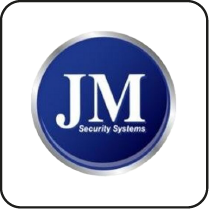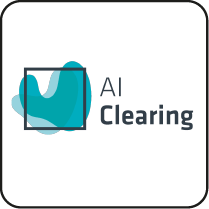Overview of ISO 14001 Clauses
What is the Purpose of ISO 14001?
ISO 14001 is an international standard for Environmental Management Systems (EMS) designed to help organisations enhance their environmental performance. It achieves this by promoting efficient resource use and waste reduction. The standard provides a structured framework that organisations can follow to establish an effective EMS, ensuring compliance with environmental laws and demonstrating a commitment to environmental stewardship.
How are the Clauses Structured within ISO 14001?
ISO 14001 is organised into ten main clauses, each addressing different aspects of an EMS. These clauses are designed to integrate seamlessly into an organisation’s existing management processes, fostering a holistic approach to environmental management. The clauses follow the Plan-Do-Check-Act (PDCA) cycle, which promotes continuous improvement.
What are the Key Elements Covered by ISO 14001 Clauses?
The key elements covered by ISO 14001 clauses include:
- Scope and Normative References: Establishing the boundaries and applicability of the EMS.
- Terms and Definitions: Providing clarity and consistency in understanding the standard.
- Context of the Organisation: Identifying internal and external issues, and the needs and expectations of interested parties.
- Leadership: Defining the responsibilities of top management and the development of an environmental policy.
- Planning: Addressing risks and opportunities, identifying environmental aspects, and setting objectives.
- Support: Ensuring resources, competence, and communication.
- Operation: Implementing operational controls and emergency preparedness.
- Performance Evaluation: Monitoring, measuring, and evaluating environmental performance.
- Improvement: Managing nonconformities and driving continual improvement.
How Does ISO 14001 Integrate with Other ISO Standards?
ISO 14001 is designed to be compatible with other ISO management system standards, such as ISO 9001 (Quality Management) and ISO 45001 (Occupational Health and Safety). This integration is facilitated by the High-Level Structure (HLS) of Annex SL, which provides a common framework for all ISO management system standards, allowing for easier implementation and alignment across different management systems.
Introducing ISMS.online and How it Helps with ISO 14001
ISMS.online is a comprehensive platform that supports organisations in implementing and managing their EMS in line with ISO 14001. Our platform offers features such as Asset Management, Risk Management, and Compliance Tracking, which streamline the process of achieving and maintaining ISO 14001 certification. With tools for monitoring environmental performance, managing documentation, and ensuring continual improvement, ISMS.online simplifies the complexities of environmental management, helping organisations meet their sustainability goals effectively.
Book a demoClause 1: Scope
What is Defined Within the Scope of ISO 14001?
The scope of ISO 14001 outlines the boundaries and applicability of the Environmental Management System (EMS) within an organisation. It specifies the extent to which the EMS will be applied, including the activities, products, services, and locations that fall under its purview. This definition ensures that all relevant environmental aspects are considered and managed effectively.
How Does the Scope Impact the Implementation of the EMS?
The defined scope significantly influences the implementation of the EMS by determining the areas that require environmental management and control. A clear and precise scope helps organisations focus their resources and efforts on the most critical environmental aspects, ensuring that the EMS is both efficient and effective. It also aids in setting realistic and achievable environmental objectives.
What are the Boundaries and Applicability of the EMS?
The boundaries and applicability of the EMS are determined by considering various factors, such as organisational structure, operational processes, and external and internal issues. These boundaries ensure that the EMS is relevant and tailored to the specific needs of the organisation, covering all significant environmental aspects and compliance obligations (Clause 4.3).
How Does the Scope Ensure Environmental Performance Enhancement?
By clearly defining the scope, organisations can systematically address all relevant environmental aspects and impacts, leading to continuous improvement in environmental performance. The scope ensures that all significant environmental issues are identified and managed, promoting efficient resource use, waste reduction, and compliance with environmental regulations (Clause 4.1). This structured approach helps organisations achieve their environmental objectives and enhance overall sustainability.

An 81% Headstart from day one
We’ve done the hard work for you, giving you an 81% Headstart from the moment you log on. All you have to do is fill in the blanks.

Clause 2: Normative References
What Normative References are Included in ISO 14001?
ISO 14001 includes essential normative references that provide additional guidance and support for implementing the standard. These references ensure that the Environmental Management System (EMS) is comprehensive and effective. The primary normative reference is ISO 14004, which offers general guidelines on principles, systems, and support techniques for environmental management.
How Do These References Support the EMS Framework?
Normative references support the EMS framework by offering detailed explanations, methodologies, and best practices that complement ISO 14001 requirements. They help organisations interpret and apply the standard effectively, ensuring all aspects of environmental management are covered. For instance, ISO 14004 provides practical advice on establishing, implementing, maintaining, and improving an EMS, aligning with the Plan-Do-Check-Act (PDCA) cycle of ISO 14001 (Clause 2).
What is the Significance of These References in Compliance?
The significance of normative references in compliance lies in their ability to provide a clear and structured approach to meeting ISO 14001 requirements. They ensure organisations have the necessary tools and knowledge to achieve and maintain compliance with environmental regulations. By following these references, organisations can demonstrate their commitment to environmental stewardship and continuous improvement (Clause 2).
How Do Normative References Ensure Standard Consistency?
Normative references ensure standard consistency by providing a unified framework and common language for environmental management. They help harmonise practices across different organisations and industries, promoting a consistent approach to environmental management. This consistency is essential for achieving reliable and comparable results, facilitating benchmarking, and fostering collaboration among organisations committed to sustainability (Clause 2).
By using ISMS.online’s features, such as compliance tracking and risk management, organisations can seamlessly integrate these normative references into their EMS, ensuring a streamlined and effective approach to environmental management.
Clause 3: Terms and Definitions
What Key Terms are Defined in ISO 14001?
ISO 14001 defines essential terms to ensure a clear and consistent understanding of the standard. These terms include “Environmental Management System (EMS),” “Environmental Aspect,” “Environmental Impact,” “Compliance Obligations,” and “Interested Party.”
How Do These Definitions Aid in Understanding the Standard?
These definitions provide a common language for organisations implementing ISO 14001. By clearly defining terms, the standard helps eliminate ambiguity, ensuring all stakeholders have a shared understanding of the requirements and processes involved in establishing an EMS.
What Are the Critical Definitions for Implementing an EMS?
Critical definitions for implementing an EMS include:
- Environmental Aspect: An element of an organisation’s activities, products, or services that can interact with the environment.
- Environmental Impact: Any change to the environment, whether adverse or beneficial, resulting from an organisation’s environmental aspects.
- Compliance Obligations: Legal requirements and voluntary commitments that an organisation must adhere to.
- Interested Party: Any person or organisation that can affect, be affected by, or perceive itself to be affected by a decision or activity related to the EMS.
How Do Terms and Definitions Ensure Clarity and Consistency?
By providing precise definitions, ISO 14001 ensures that all parties involved in the EMS implementation process have a clear understanding of key concepts. This clarity helps in the consistent application of the standard across different organisations and industries, facilitating effective communication and collaboration. For instance, understanding “compliance obligations” (Clause 3.2.9) ensures that organisations can accurately identify and manage their legal and voluntary commitments.
ISMS.online supports this clarity by offering tools for managing compliance obligations, tracking environmental aspects, and ensuring that all stakeholders are aligned with the defined terms and requirements of ISO 14001.

Free yourself from a mountain of spreadsheets
Embed, expand and scale your compliance, without the mess. IO gives you the resilience and confidence to grow securely.

Clause 4: Context of the Organisation
Determining the Organisation’s Context
Organisations must understand their context to establish an effective Environmental Management System (EMS). This involves identifying internal and external factors that influence environmental performance. Internal factors include organisational structure, culture, and capabilities, while external factors encompass regulatory requirements, market conditions, and environmental trends (Clause 4.1).
Internal and External Issues Considered
Internal issues might involve resource availability, technological capabilities, and internal processes. External issues include regulatory changes, environmental risks, and stakeholder expectations. By analysing these factors, organisations can identify potential risks and opportunities that impact their EMS (Clause 4.1).
Identifying Needs and Expectations of Interested Parties
Organisations must identify the needs and expectations of interested parties, such as customers, regulators, employees, and the community. This involves engaging with stakeholders to understand their concerns and requirements, which can influence the EMS’s objectives and scope (Clause 4.2).
Influence on EMS Scope and Objectives
The context of the organisation directly impacts the scope and objectives of the EMS. A thorough understanding of internal and external issues, along with stakeholder needs, helps define the EMS boundaries and set relevant environmental objectives. This ensures the EMS is tailored to the organisation’s specific circumstances, promoting effective environmental management and compliance (Clause 4.3).
ISMS.online supports organisations in this process by providing tools for stakeholder management, compliance tracking, and risk assessment, ensuring a comprehensive approach to understanding and addressing the context of the organisation.
Clause 5: Leadership
Responsibilities of Top Management in ISO 14001
Top management is integral to the successful implementation and maintenance of an Environmental Management System (EMS). Their responsibilities include establishing an environmental policy, integrating the EMS into the organisation’s business processes, and providing the necessary resources for its effectiveness. They must also communicate the importance of effective environmental management and ensure that the EMS achieves its intended outcomes (Clause 5.1).
Development and Communication of the Environmental Policy
The environmental policy is a cornerstone of the EMS, reflecting the organisation’s commitment to environmental protection, compliance with legal requirements, and continual improvement. Top management is responsible for developing this policy, ensuring it is appropriate to the organisation’s context, and aligning it with strategic direction. The policy must be documented, implemented, maintained, and communicated to all employees and made available to interested parties (Clause 5.2).
Roles and Responsibilities within the EMS
Clear roles and responsibilities are essential for the effective functioning of the EMS. Top management must assign and communicate responsibilities and authorities to ensure that the EMS conforms to ISO 14001 requirements. This includes appointing a management representative to oversee the EMS, ensuring that environmental performance is reported to top management, and promoting awareness and involvement at all levels of the organisation (Clause 5.3).
Ensuring Commitment to Environmental Management
Leadership commitment is critical for the success of the EMS. Top management must demonstrate leadership and commitment by taking accountability for the effectiveness of the EMS, supporting other management roles, and promoting continuous improvement. They must also ensure that the EMS is integrated into the organisation’s strategic planning and decision-making processes, fostering a culture of environmental responsibility (Clause 5.1).
ISMS.online supports organisations in fulfilling these leadership responsibilities by providing tools for policy management, role assignment, and performance tracking, ensuring a robust and compliant EMS.

Manage all your compliance, all in one place
ISMS.online supports over 100 standards and regulations, giving you a single platform for all your compliance needs.

Clause 6: Planning
Addressing Risks and Opportunities in ISO 14001
ISO 14001 mandates that organisations identify and address risks and opportunities that could impact their Environmental Management System (EMS). This involves evaluating internal and external factors, compliance obligations, and environmental aspects to ensure the EMS achieves its intended outcomes and prevents undesired effects (Clause 6.1).
Identifying Environmental Aspects and Impacts
Organisations must identify environmental aspects associated with their activities, products, and services, including normal, abnormal, and emergency conditions. The significance of these aspects is determined by their potential environmental impacts, considering factors like frequency, severity, and legal requirements (Clause 6.1.2).
Determining and Managing Compliance Obligations
Compliance obligations include legal requirements and voluntary commitments related to environmental aspects. Organisations must identify, access, and understand these obligations to ensure they are integrated into the EMS. This involves maintaining up-to-date records of applicable laws and regulations and monitoring changes to ensure ongoing compliance (Clause 6.1.3).
Establishing and Maintaining Environmental Objectives and Plans
Environmental objectives should align with the organisation’s environmental policy and consider significant environmental aspects, compliance obligations, and risks and opportunities. Objectives must be measurable, monitored, communicated, and updated as necessary. Plans to achieve these objectives should include specific actions, resources, responsibilities, timelines, and evaluation methods (Clause 6.2).
ISMS.online simplifies this planning process by offering tools for risk assessment, compliance tracking, and objective management. Our platform ensures that organisations can effectively address risks and opportunities, identify and manage environmental aspects, and establish robust environmental objectives and plans, fostering continual improvement and compliance with ISO 14001.
Further Reading
Clause 7: Support
Resources Required for an Effective EMS
An effective Environmental Management System (EMS) requires adequate resources, including human, financial, technological, and infrastructural assets. Organisations must ensure these resources are available to establish, implement, maintain, and continually improve the EMS. This involves allocating sufficient budget, skilled personnel, and appropriate technology to support environmental objectives and compliance obligations (Clause 7.1).
Ensuring Competence Within the Organisation
Competence is critical for the successful operation of an EMS. Organisations must determine the necessary competence for personnel whose work affects environmental performance and ensure they possess the required skills, knowledge, and experience. This can be achieved through targeted training programmes, continuous education, and performance evaluations. Documenting and maintaining records of competence helps in tracking progress and identifying further training needs (Clause 7.2).
Communication Requirements for ISO 14001
Effective communication is essential for the EMS’s success. Organisations must establish processes for internal and external communication, ensuring relevant environmental information is conveyed clearly and accurately. This includes communicating the environmental policy, objectives, and performance to employees, stakeholders, and interested parties. Reliable communication channels help in fostering transparency, engagement, and compliance with environmental regulations (Clause 7.4).
Controlling and Maintaining Documented Information
Documented information is vital for the EMS’s integrity and effectiveness. Organisations must control and maintain documents required by ISO 14001 to ensure they are available, suitable, and protected. This involves managing the creation, updating, distribution, and storage of documents, ensuring they remain legible and accessible. Proper documentation control supports compliance, facilitates audits, and aids in continual improvement (Clause 7.5).
ISMS.online offers robust tools for resource management, competence tracking, communication, and document control, ensuring organisations can efficiently support their EMS and achieve ISO 14001 compliance.
Clause 8: Operation
Implementing Operational Controls in ISO 14001
Operational controls in ISO 14001 are vital for managing significant environmental aspects and ensuring compliance with legal and other requirements. These controls include documented procedures, work instructions, and monitoring systems tailored to the organisation’s activities, products, and services. By establishing clear criteria for operations and maintenance, organisations can prevent deviations and ensure consistent environmental performance (Clause 8.1).
Lifecycle Perspective in Operational Planning
A lifecycle perspective in operational planning involves considering the environmental impacts of a product or service from its inception to disposal. This approach ensures that environmental considerations are integrated into design, procurement, production, and end-of-life processes. By adopting a lifecycle perspective, organisations can identify opportunities for reducing environmental impacts and enhancing sustainability throughout the product’s lifecycle (Clause 8.1.2).
Managing Emergency Preparedness and Response
Emergency preparedness and response are critical components of ISO 14001. Organisations must identify potential emergency situations and develop plans to prevent and mitigate adverse environmental impacts. This includes conducting regular drills, training employees, and reviewing response procedures to ensure effectiveness. Proper emergency management helps organisations minimise environmental damage and maintain compliance during unexpected events (Clause 8.2).
Controlling Outsourced Processes
Controlling outsourced processes is vital for maintaining the integrity of the Environmental Management System (EMS). Organisations must ensure that external providers comply with their environmental requirements. This involves setting clear expectations, monitoring performance, and integrating environmental criteria into procurement processes. Effective control of outsourced processes helps organisations manage risks and ensure that their environmental objectives are met (Clause 8.1.4).
ISMS.online supports these operational aspects by offering tools for process documentation, lifecycle assessment, emergency response planning, and supplier management, ensuring comprehensive and effective EMS implementation.
Clause 9: Performance Evaluation
Monitoring and Measuring Environmental Performance
Environmental performance in ISO 14001 is monitored and measured through a systematic approach that includes defining key performance indicators (KPIs), collecting data, and analysing results. Organisations must establish what to monitor, how to measure, and the frequency of these activities to ensure accurate and reliable data (Clause 9.1.1). This process helps identify trends, assess the effectiveness of the Environmental Management System (EMS), and drive continual improvement.
Requirements for Internal Audits in ISO 14001
Internal audits are essential for evaluating the conformity of the EMS with ISO 14001 requirements and the organisation’s own criteria. These audits must be conducted at planned intervals, following a defined programme that includes audit scope, frequency, and methods (Clause 9.2.2). Auditors must be objective and impartial, ensuring that audit results provide an accurate assessment of the EMS’s effectiveness. ISMS.online offers tools to schedule, document, and track internal audits, ensuring a streamlined and efficient audit process.
Evaluating Compliance with Legal and Other Requirements
Compliance evaluation involves regularly assessing the organisation’s adherence to applicable legal requirements and other commitments. This includes identifying relevant regulations, maintaining up-to-date compliance records, and evaluating compliance status at planned intervals (Clause 9.1.2). Organisations must take corrective actions if non-compliance is detected, ensuring ongoing adherence to legal and voluntary obligations. ISMS.online supports this by providing compliance tracking and reporting features, facilitating proactive compliance management.
Management Review and Continual Improvement
Management reviews are essential for ensuring the EMS remains suitable, adequate, and effective. Top management must review the EMS at planned intervals, considering inputs such as audit results, compliance status, and performance data (Clause 9.3). The review should identify opportunities for improvement and make decisions on necessary changes to the EMS. This process fosters a culture of continual improvement, aligning environmental objectives with organisational goals. ISMS.online aids in this by offering tools for performance tracking and management review documentation, ensuring a robust and responsive EMS.
Clause 10: Improvement
Managing Nonconformities and Corrective Actions
ISO 14001 mandates that organisations identify and manage nonconformities within their Environmental Management System (EMS). When a nonconformity occurs, organisations must promptly address it by implementing corrective actions. This involves conducting a root cause analysis to uncover underlying issues and taking steps to prevent recurrence. Documenting these actions and reviewing their effectiveness ensures continual improvement (Clause 10.2).
Achieving Continual Improvement in ISO 14001
Continual improvement is a fundamental principle of ISO 14001. Organisations must regularly evaluate their EMS to identify opportunities for enhancement. This includes analysing performance data, audit results, and stakeholder feedback. By setting measurable environmental objectives and monitoring progress, organisations can drive ongoing improvements in environmental performance, ensuring the EMS remains effective and aligned with strategic goals (Clause 10.3).
Methods to Enhance EMS Effectiveness
Enhancing EMS effectiveness involves adopting methods such as performance benchmarking, implementing best practices, and utilising technological advancements. Regular internal audits and management reviews are essential for identifying areas for improvement. Engaging employees through training and awareness programmes fosters a culture of environmental responsibility, contributing to the overall effectiveness of the EMS (Annex A.10.1).
Ensuring Ongoing Compliance and Performance
To ensure ongoing compliance and performance, organisations must maintain up-to-date records of legal requirements and voluntary commitments. Regular compliance evaluations and proactive risk management help identify and mitigate potential issues. Utilising tools like ISMS.online for compliance tracking, performance monitoring, and documentation management supports organisations in maintaining a robust and compliant EMS, driving continual improvement and sustainable practices (Clause 10.1).
Book a Demo With ISMS.online
How Can ISMS.online Assist With ISO 14001 Implementation?
ISMS.online simplifies ISO 14001 implementation by offering a comprehensive suite of tools that streamline the process. Our platform provides step-by-step guidance, ensuring your organisation meets the standard’s requirements efficiently. With ISMS.online, you can seamlessly integrate ISO 14001 into your existing management systems, fostering a holistic approach to environmental management (Clause 4.4).
What Features Does ISMS.online Offer for EMS Management?
Our platform includes features such as Asset Management, Risk Management, and Compliance Tracking, essential for effective EMS management. Asset Management helps monitor environmental assets and their impacts, while Risk Management tools enable you to identify, assess, and mitigate environmental risks (Clause 6.1). Compliance Tracking keeps your organisation up-to-date with legal and voluntary obligations, facilitating ongoing adherence to ISO 14001 (Clause 9.1.2).
How Does ISMS.online Support Continual Improvement and Compliance?
ISMS.online supports continual improvement by offering performance monitoring and audit management tools. These features help you track environmental performance, conduct internal audits, and implement corrective actions, ensuring your EMS remains effective and compliant (Clause 10.2). Our platform also provides real-time data and customizable reports, enabling informed decisions and driving sustainable practices (Clause 9.3).
How to Schedule a Demo With ISMS.online for Further Assistance?
Scheduling a demo with ISMS.online is straightforward. Visit our website and fill out the demo request form, providing details about your organisation's needs and objectives. Our team will contact you to arrange a convenient time for the demo, where we will showcase how our platform can enhance your EMS and help you achieve ISO 14001 certification.
Experience the transformative power of ISMS.online and take the first step towards a robust and compliant Environmental Management System. Book your demo today and unlock the potential of seamless ISO 14001 implementation.
Book a demo








